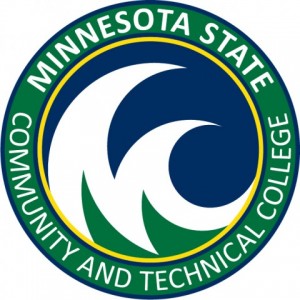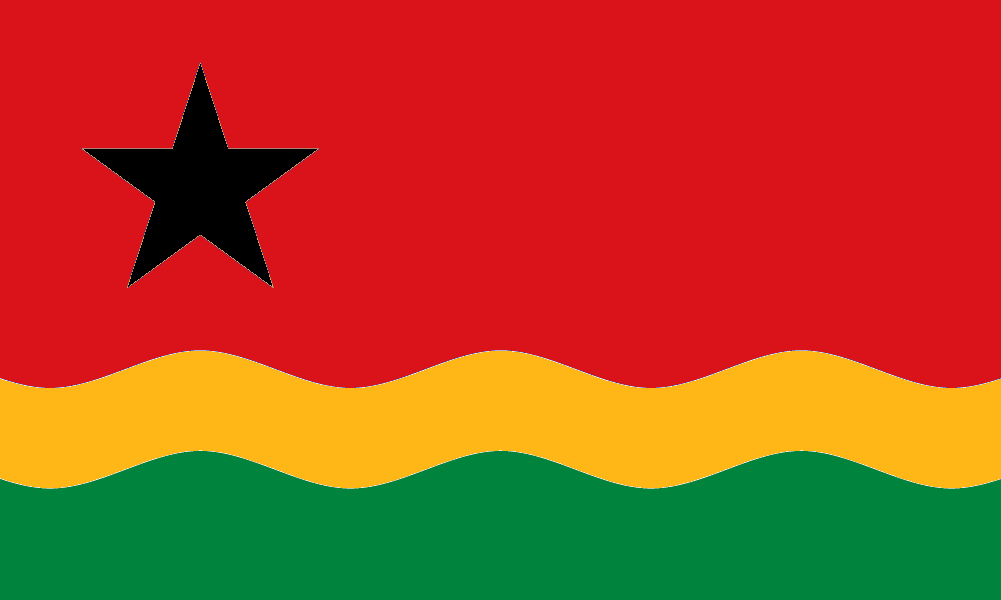LOCAL
MINNESOTA EMBLEMS




Byron





Bayport


Mankato
OTHER PROPOSALS
for a new Minnesota flag
What are its origins?The North Star Flag depicts the North Star (the Pioneer motto) shining upon a "land of 'sky-tinted waters'" (the Dakota phrase, mni sota makoce). It thus preserves the basic symbolism of the Official State Flag – namely, our Pioneer and Indian legacies – while reflecting the ongoing interplay between natives and newcomers to our state. The design won a 2001 contest for a new state flag sponsored by the St. Paul Pioneer Press. A draft bill has been composed for its adoption, including precise design specifications and vector art.
Two Minnesota "vexillologists" (flag specialists) proposed the flag in 1989, after reviewing various options for a new state flag. Rev. William Becker and Mr. Lee Herold have lifelong interests in flags, and are longtime members of the North American Vexillological Association (NAVA). Rev. Becker, the primary designer, has written an article on the state flag's history for the Minnesota Historical Society, as well as a book on papal flags. Mr. Herold assisted the design and its promotion, and owns and manages Herold Flags in Rochester.
The two received support for the design, which they have dedicated to the public domain, from international experts. These included John Ross Matheson (the "architect" of Canada's flag), Walter Angst (of the Smithsonian Institution), William Crampton (of Britain's Flag Institute), and Whitney Smith (of the former Flag Research Center in suburban Boston).
The two men appeared before a legislative committee twice in 1989, to advocate for a new flag in time for the original flag's centennial (1993). A bi-partisan effort to study the matter, led by Reps. Gil Gutknecht and Wayne Simoneau, was endorsed by several legislators and newspapers, but was unsuccessful (i.e. no bill was filed). The first bill was filed in 2000 and resurfaced repeatedly until 2023, when a new law established an official commission to redesign the state flag and seal. Similar initiatives have occurred elsewhere.
Why the pattern?The pattern of the flag – a star and several horizontal stripes – evokes the basic pattern of the American flag. The star appears in the "canton," the most visible part of a flag when flying.
The stripes are arranged so that the white band clearly separates blue from green. This respects the rules of heraldry, where softer colors (like white) segregate bolder colors (blue, green), to distinguish each from afar (blazon here). The lower stripes are slightly “abased” to capitalize on the relative stability of a flag’s lower hoistward area, when flying in the wind.
By coincidence, the pattern resembles several other Minnesota emblems (as below): the National Guard JFHQ insignia (1933), a state flag proposal by a Norwegian vexillologist (1975), a state flag proposal in the Utne Reader (2001), the flag of Duluth (2019), and finalist F2100 of the official redesign process (2023). Several of these, conceived independently during the past century, have won contests or official standing. In fact, a wide top stripe bearing a star, above narrow wavy bottom stripes, has no parallel among national and regional flags worldwide; the pattern is uniquely Minnesotan, and is a potential “archetype” for a new state flag (as below).

Why the colors?Blue, white, and green are intuitive northern colors, evoking sky-tinted waters, winter, and farmlands and forests.
These colors have appeared in many Minnesota emblems since the 1970s (see examples at left) – including the state license plate, the state fair logo, the government's "official brand," various civic flags or logos, and the principal entries in separate contests for a new state flag sponsored by the St. Paul Pioneer Press and the Minneapolis Star-Tribune, which stated:
"We asked readers to suggest a new flag, and we received almost 400 responses. While we can't print them all, ... most used the colors green, blue or white – or all three – and a star, representing the North Star." (Star-Tribune, Mar. 14, 2000, p. E1)
Why the star?"The North Star" has been Minnesota's official motto since statehood (1858), and is inscribed on the state seal in French: "L'Étoile du Nord." Gov. Henry Sibley chose it to promote Minnesota as a guiding light for the union; the French rendering recalled the first European explorers of the northern frontier. (In early North Star Flag drafts, the star bore a fleur-de-lis to recall the compass lily marking due north, as well as the motto's French rendering.)
In official state flags, the North-Star theme appeared in several distinct ways: in the written motto itself, in the topmost (and largest) of the 19 stars which ring the state seal, and (as intended by the designer) in the "Great Star" pattern ringing the seal – a pattern often found in 19th-century U.S. flags. In keeping with that pattern, the North Star Flag renders the star prominently and in gold. The "Great Star" pattern and gold color are also evident in U.S. flags carried by Minnesota units in the Civil War.
The North Star is 5-pointed, in keeping with both U.S. and Minnesota traditions – including our official state flags and the National Guard JFHQ pin and patch. The North-Star theme also appears variously in the state seal, the State Capitol, the Minnesota History Center, Duluth's flag, and the logo of the Minnesota State university system; other representations include Northstar Commuter Rail Line and several professional sports franchises (e.g. the Twins, Timberwolves, Lynx, Wild, former North Stars, MN Aurora FC, & MN United FC). The North Star also appears in the flags of Alaska and Maine, while single stars are prominent in the flags of Texas, Arizona, Puerto Rico, Nevada, North Carolina, California, and Massachusetts – all 5-pointed.
(Note: By contrast, 8-pointed renderings often resemble the "Christmas Star" or other compass-star flags elsewhere, while indigenous star-patterns risk "cultural appropriation" – which has troubled other flags.)
Why the waves?The waves reflect the name "Minnesota." It comes from the Dakota-Sioux phrase, mni sota makoce – "land where the waters reflect the clouds," or "land of sky-tinted water." It is said that natives demonstrated this to early settlers by dropping a little milk into water. The name was given first to the river, then to the territory, and finally to the state.
In heraldry, water is represented by a "wavy fess" (i.e., stripe). This is ideal for a state with so many lakes and rivers. Heraldry based on such nomenclature is called "canting heraldry." Not surprisingly, regional Native American pictographs likewise used parallel wavy lines to denote a river or stream. The three wave crests also recall the three great watersheds formed by the nexus of two continental divides in northern Minnesota – directing water toward the Hudson Bay, Atlantic Ocean, or Gulf of Mexico.
Wavy stripes appear in the Minnesota National Guard JFHQ insignia, in several Minnesota flag redesigns, and in the civic flags of Winona, Duluth, and Mankato; as well as in many flags outside Minnesota, such as those of St. Louis, Cincinatti, British Columbia, New Brunswick, Vancouver B.C., etc.
Are there other designs, too?Yes. Several alternatives are shown at left. Since 1989, state flag contests have been held by print media in the Star-Tribune (Mar. 14, 2000), Pioneer Press (Mar. 31, 1989 & Aug. 14, 2001), and Utne Reader (Nov.-Dec. 2001). Online forums also promote redesigns, including Minnesotans for a Better Flag, Change.org, Reddit, Vexillology Wiki, and Alan Hardy's social media contests in 2019 (semifinalists here) & 2022 (semifinalists here).
Several resemble the North Star Flag, including one based on the Minnesota National Guard JFHQ insignia; another which won the Utne Reader contest (by Marcel Stratton, a former art professor); and others using a variant star (by Ted Kramer) muted colors (by Ben Houtkooper), or more modest wave pattern (e.g. F2100 by John Muller, which was one of the three official finalists in 2024). Further designs apply the North Star to different patterns, or feature a Nordic Cross, a loon, the "Great Star" pattern of 19 stars found in the current flag, or other motifs.
On December 19, 2023, an official State Emblems Redesign Commission completed a review of over 2,100 proposals for a new state flag, and chose a final design. It features the North Star on a stylized state map in dark blue at the hoist, and a light blue field in the fly for the "sky-tinted waters" of Minnesota (bottom left). It become official on May 11, 2024.
COMMUNAL VARIANTS
MINNESOTA WILD
TIMBERWOLVES & LYNX
VIKINGS
ACE
DARK GLITTERATI
PRIDE
GERMAN
NORWEGIAN
SWEDE
BLACK POWER
SOMALI
HOME PAGE DESIGN NEWS OLD FLAG HISTORY F.A.Q. HELP OUT MERCH PROPOSAL
Poor Flags Good Flags Flies Poorly Flies Well Versatility New Flags Alternate Flags
State Seal Battle Flags 1893 Flag Anderson Effort 1989 Effort Oliver Effort
























































